New Study: Militarizing the Police Hurts Everyone, Including the Police
Photo by Scott Olson/Getty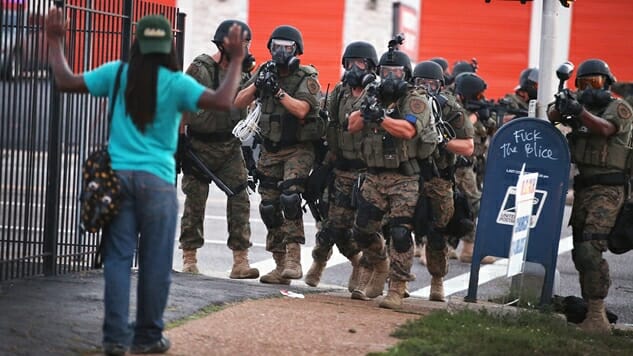
Proceedings of the National Academy of Sciences of the United States of America (PNAS) was the second-most cited journal across all fields of science from 1999 to 2009 (the last period which data was available). Yesterday, they published a study titled “Militarization fails to enhance police safety or reduce crime but may harm police reputation.” Here is the summary of Assistant Professor of Politics and Public Affairs at Princeton University, Jonathan Mummolo’s findings:
National debates over heavy-handed police tactics, including so-called “militarized” policing, are often framed as a trade-off between civil liberties and public safety, but the costs and benefits of controversial police practices remain unclear due to data limitations. Using an array of administrative data sources and original experiments I show that militarized “special weapons and tactics” (SWAT) teams are more often deployed in communities of color, and—contrary to claims by police administrators—provide no detectable benefits in terms of officer safety or violent crime reduction, on average. However, survey experiments suggest that seeing militarized police in news reports erodes opinion toward law enforcement. Taken together, these findings suggest that curtailing militarized policing may be in the interest of both police and citizens.
Like many facets of our dystopia (like the over-leveraged banks which rule the world), we have Bill Clinton to thank for this part of our present malaise. In 1997, he signed into law H.R. 3230, which was the National Defense Authorization Act for that fiscal year. It contained a provision called section 1033, which allowed the Secretary of Defense to sell or transfer excess military equipment to local law enforcement agencies. Between 2006 and 2014 alone, the Department of Defense transferred over $1.5 billion worth of equipment.
Some of this equipment can conceivably be used to modernize the police force. Others are flat-out absurd, and are emblematic of the ongoing collapse of America via hyper-militarization. According to OpenTheBooks, a nonprofit watchdog group that tracks private government spending, the 1033 program has transferred 625 Mine Resistant Vehicles to local police departments at a total cost of $421.1 million. For the uninitiated, this is a Mine Resistant Vehicle.
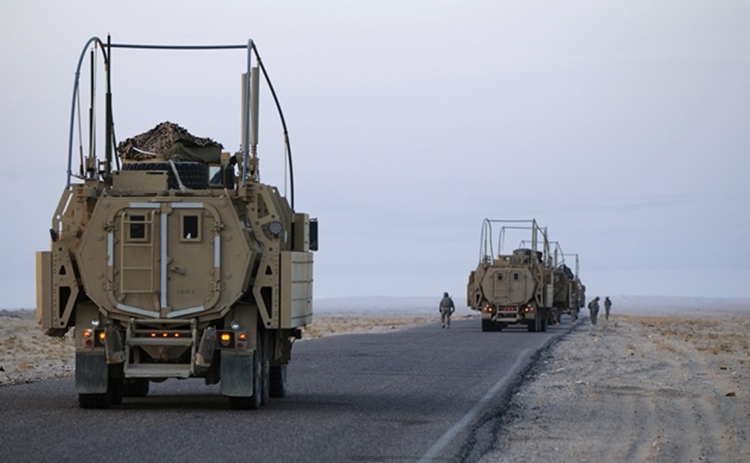
Photo via Pool/Getty
Someone please explain to me why a transport vehicle specifically designed to insulate troops from the torrent of improvised explosive devices in Iraq is needed for local police. This is what this new study out of PNAS is getting at, and it’s a crucial aspect of the tragedy in Ferguson, Missouri that has largely been forgotten. In response to a protest, the police flexed their muscle, and looked like our occupying forces in Iraq, not a group of people there to “protect and serve” the community. This helped the protesters get their message to a larger group of people than they would have if the police looked like, well, police, and not soldiers.
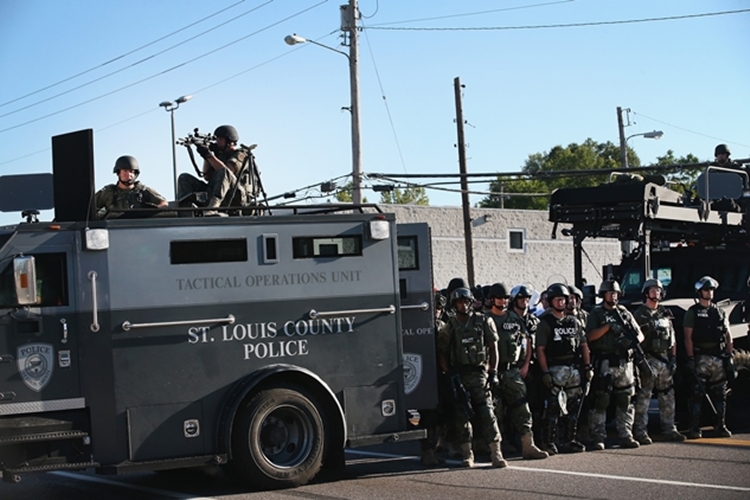
Photo via Scott Olson/Getty
But unlike our occupying forces in Iraq, many of these officers didn’t even obey the very serious and very basic directive of “don’t point your gun at someone unless you intend to shoot.”
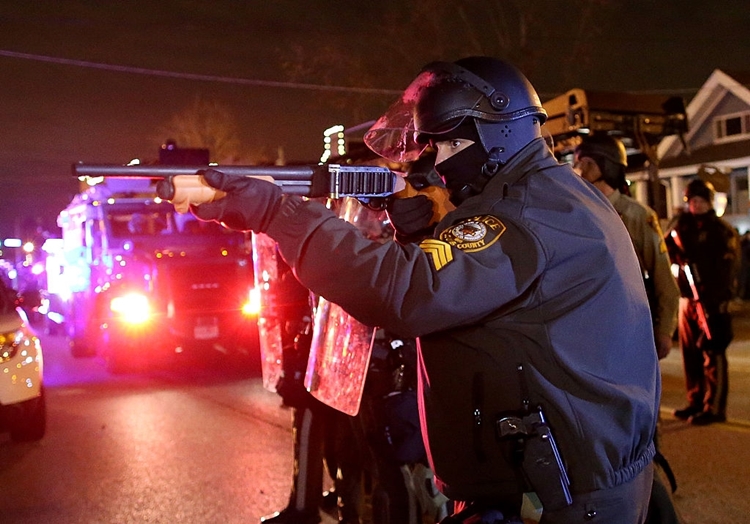
Photo via Justin Sullivan/Getty
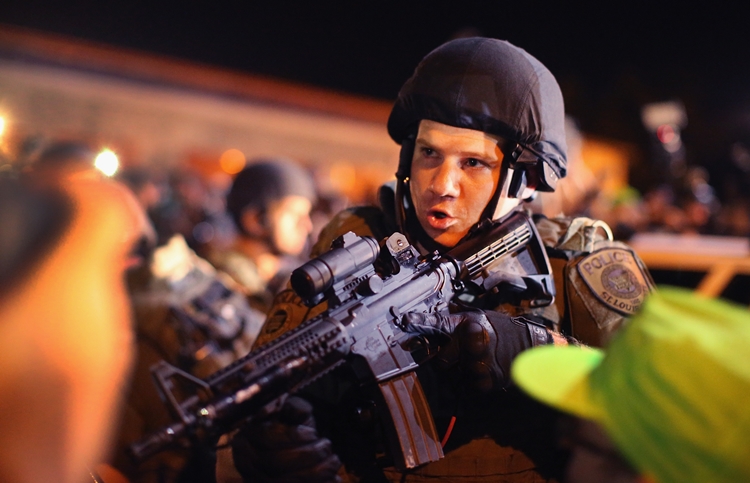
Photo via Scott Olson/Getty

Photo via Scott Olson/Getty
Those images are iconic because they degrade the reputation of the police department. Why do you need to bring a sniper rifle to a protest? Why do you need to point it at protesters? Task and Purpose, who exists solely to cover military and veterans issues, published a piece titled “Why Do So Many Recent Veterans Dislike Police Officers?” Per Tom Ricks of Task and Purpose:
The April photos out of Newnan, Georgia, of local police pointing rifles at peaceful demonstrators over the weekend, reminded me of a running discussion I’ve been having with several friends: Why do so many of our recent veterans dislike police officers?
The first answer, which some have said to me, is that the cops treat them like they treated Afghans and Iraqis, with weapons, flex-ties, and shouts that often were not understood. A second answer is that while our vets were off fighting our wars, a lot of local police militarized after 9/11, getting body armor, military helmets, automatic weapons, and even wheeled armored vehicles.
But a third, more complex answer, on top of those two, is that the soldiers feel they were well trained to use all that tactical gear, but that the police are not — and that is dangerous.
America’s policing crisis is partially a crisis of poor training. We have funneled weapons of war into areas of peace while failing to train police on proper tactics, and the result is a cartoonish display that disproportionately affects communities of color. Combine the endless line of police-induced tragedies with patently absurd images like Mine Resistant Vehicles on the streets of America, and this degrades confidence in the police even further, which makes their job as peacekeepers even harder to do than it already is (another big part of the problem is that we ask our police officers to handle far too many situations outside their trained expertise—like dealing with mental health crises). This cycle will continue spiraling into infinity unless America’s police departments understand the personally damaging dynamic that they contribute to with these needless displays and acts of violence.
Jacob Weindling is a staff writer for Paste politics. Follow him on Twitter at @Jakeweindling.







































